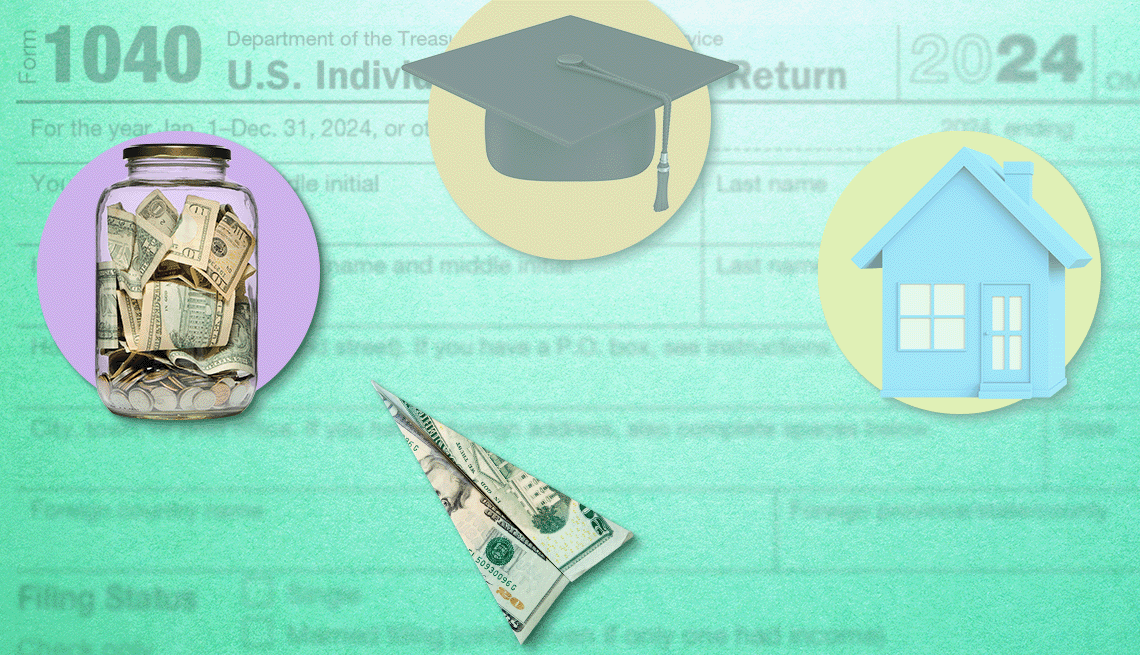AARP Hearing Center


Odds are, there’s a 2024 tax refund coming your way or you’ve already received one. In a recent Taxslayer survey, nearly 4 out of 5 taxpayers said they believed they’d be getting money back from the IRS this year.
“The income tax refund, for many people, ends up being the largest single cash windfall that they get during the course of a year,” says Mark Hamrick, senior economic analyst at Bankrate. Last year, the average federal income tax refund was $3,382.
The IRS’s automated Where’s My Refund? tool lets you track the status of your federal tax refund. But what’s the best way to use the money?
“Every person’s situation is really going to differ. It comes down to your goals and personal financial situation,” says Jeff George, founder and principal of the Tao Financial wealth management firm in Orlando, Florida.
Need a little direction? Here are five expert-recommended ways to consider spending your refund.
1. Boost your emergency savings
If you don’t already have an emergency fund to cover three to six months’ worth of living expenses, you’re not alone. Witness: 14 percent of Gen Xers (ages 45–60) and 10 percent of boomers (ages 61–79) have no emergency savings, according to Bankrate’s 2025 emergency savings report. Moreover, a recent AARP research report, “Preparing for the Unexpected: Understanding Emergency Savings and Why It Is Critical to Financial Well-Being,” found that just half of U.S. households have set aside enough money to cover expenses for three months, and fewer than 3 in 4 households could come up with $2,000 if an unexpected need arose.
Your tax refund can help you build or bulk up a rainy-day fund for unexpected costs like an emergency car or home repair or a big medical bill. “The less you have in savings, the more you have to rely on debt in an emergency,” says Lazetta Rainey Braxton, a certified financial planner and founder and managing principal of The Real Wealth Coterie advisory firm in New York City.
Want to put your federal tax refund directly into a bank account that you’ve designated for emergency savings so that you’re not tempted to spend the money? The IRS allows you to elect to receive your refund via direct deposit and split it into as many as three accounts.
For low-risk returns, consider putting the money in a high-yield savings account at a federally insured bank. In mid-March, high-yield online savings accounts were offering interest rates as high as 4.5 percent, according to Bankrate.


































































More From AARP
6 Tax Breaks If You Have an Adult Dependent
Caring for a parent or other family member could cut your income tax bill
10 States That Tax Groceries in 2025
Most states exempt groceries from sales taxes, but in other places, residents still have to pay. From Alabama to Virginia, see where a food tax is part of life.
States With No Sales Tax (And Those that Have the Lowest)
Find where has the lowest sales taxes